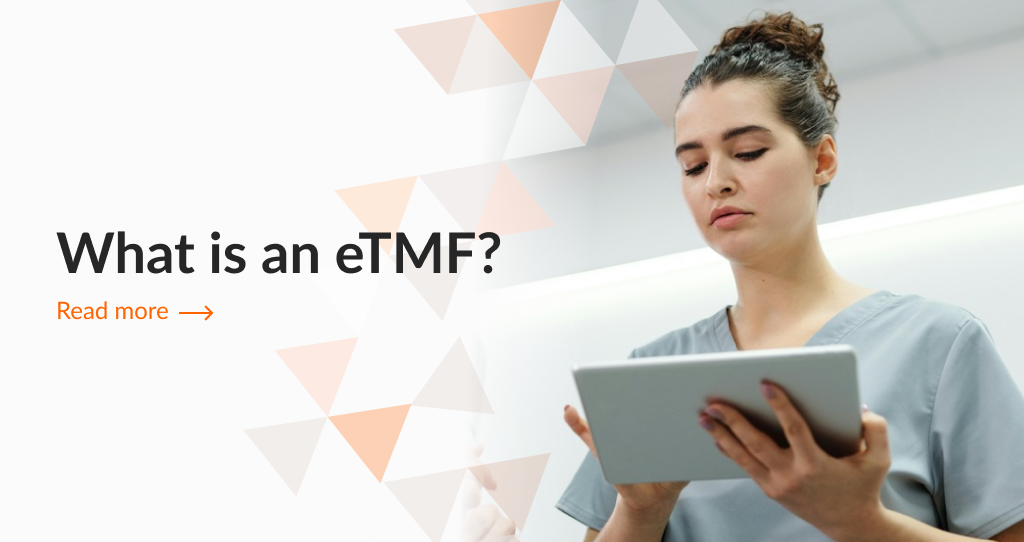One of the most often used words in the very highly regulated and documentation-intensive world of clinical trials is TMF, or the Trial Master File. For new clinical operations individuals or even veteran researchers looking for an explanation, comprehending what TMF is and what it's for is critical.
In simple terms, the Trial Master File is the single source for critical documents for a clinical trial. It documents the entire history of a trial from site identification to close-out and demonstrates that the study was performed per regulatory expectations and Good Clinical Practice (GCP).
But what exactly does TMF contain? Why is it so critical to clinical operations and inspections? How has technology transformed its management? This blog will answer those questions and more, offering a comprehensive look at what the TMF is used for and how modern solutions like Octalsoft’s eTMF system are revolutionizing its management.
What is a Trial Master File (TMF)?
The Trial Master File consists of necessary documents that allow the investigator to conduct a clinical trial to be reconstructed and assessed by independent stakeholders, i.e., auditors, sponsors, and regulatory inspectors.
The International Conference on Harmonisation (ICH) E6(R2) guideline for Good Clinical Practice establishes what documents are regarded as necessary and the conditions for upkeep of a TMF.
In easy words, the TMF is a best practice as well as a regulatory requirement; a compliance backbone that provides transparency, oversight, and accountability across the clinical trial lifecycle.
Why is TMF Important?
The significance of TMF can be encapsulated in three words: compliance, credibility, and continuity.
1. Regulatory Compliance
Regulatory bodies such as the FDA (U.S.), EMA (Europe), and MHRA (UK) insist that sponsors and CROs have complete and accurate documentation to prove GCP compliance. The trial was in line with ethical and regulatory principles as seen in a well-kept TMF.
2. Trial Oversight and Credibility
The TMF offers proof that every step of the clinical trial, from the selection of sites through subject enrollment to verification of data, was conceived, monitored, and performed appropriately. This openness enhances the validity of the test and facilitates audit readiness.
3. Continuity Across Teams
Clinical trials can involve many stakeholders: sponsors, CROs, investigators, vendors, and regulators. The TMF provides all of them with access to documents needed in order to know the history, context, and decisions of the trial, even if staff changes partway through the study.
What Does the TMF Contain?
The TMF holds hundreds, occasionally thousands, of documents organized into categories according to the TMF Reference Model, an industry-de facto standard framework developed by the Drug Information Association (DIA).
The most significant document types are
- Trial protocol and amendments
- Investigator brochures and informed consent forms
- Regulatory approvals (e.g., IRB/IEC approvals)
- Site management records
- Monitoring visit reports
- Serious adverse event reports
- Data management and statistical documents
- Close-out reports and study summary reports
Each report is dated and version-controlled to maintain the integrity and traceability of data.
When is TMF used?
The TMF is utilized across the entire life cycle of a clinical trial. Its utilization is not restricted to post-study archiving. Rather, it actively contributes from study startup through close-out:
Study Startup
Site selection, IRB/ethics approvals, investigator agreements, and protocol approvals are recorded.
Study Conduct
Monitoring reports, subject enrollment logs, safety communications, and protocol deviations are all examples of documentation done continually.
Study Close-Out
Final reports, reconciliation of critical documents, archiving approvals, and audits are finalized and documented in the TMF.
The TMF has to be in inspection-ready status at all times, which means it should always be in good order, up-to-date, and available for access by authorized individuals.
Paper TMF vs. eTMF: How Document Management Evolved
In the past, TMFs were paper-based, literally kept in binders and filing cabinets at sponsor or CRO offices. Paper TMF administration was labor-intensive, prone to errors, and threatened loss or misplacement of documents.
Step in the Electronic Trial Master File (eTMF), a system that enables electronic collection, management, and archiving of TMF documents. eTMF systems have become the standard for their obvious benefits:
- Real-time access and collaboration
- Automated version control and audit trails of documents
- Searchable databases with tagging of metadata
- Remote monitoring and review capabilities
- Greater regulatory compliance through inherent quality checks
eTMFs transform the TMF into an engaged, living component of the clinical trial environment not a dead file.
Challenges to TMF Management
Even with the criticality of the TMF, numerous organizations continue to struggle with effective management. Some of the common challenges are-
- Variation in document filing practices between sites or teams
- Document uploads are delayed, particularly from distant sites
- Duplicate or missing files
- No version control
- Inadequate visibility into TMF health or completeness
These can culminate in critical inspection results or even trial postponements. Consequently, possessing a strong and smart eTMF system is currently necessary rather than desirable.
Final Thoughts: Why TMF Matters More Than Ever
In clinical research, documentation is not an administrative routine, it's the basis for trust, responsibility, and scientific integrity. The record that a trial was performed ethically, safely, and in compliance with regulatory requirements is the Trial Master File.
Whether you are a sponsor with multiple sites or a CRO coordinating efforts across continents, your TMF is the one source of truth that regulatory agencies will query during inspection and verification.
In a time when clinical trials are more complex and global than ever before, keeping your TMF control old-school and manual is a risk you can't afford. Today's cutting-edge eTMF solutions, such as Octalsoft's, not only ensure compliance but also give your teams the power of efficiency, visibility, and control to close studies faster.So if you're still handling TMFs the traditional way, it's time to think ahead.
With Octalsoft's eTMF, you're not just filing away documents; you're laying the foundation for your trial's success.
Octalsoft's eTMF: A Smarter Way to Manage Your Trial Master File
Octalsoft provides a purpose-built, fully integrated Electronic Trial Master File (eTMF) solution that streamlines and secures clinical documentation at every phase of your trial.
Octalsoft's eTMF provides:
- Real-time tracking and collaboration of documents between global study teams
- Automated checks for completeness according to the TMF Reference Model
- Role-based access controls for safety and compliance
- Easy-to-use dashboards and reports on TMF health status and audit readiness
- Seamless integration with EDC, CTMS, and other eClinical systems
Octalsoft’s eTMF is 21 CFR Part 11 compliant, supports remote inspections, and is built to scale with your organization, whether you’re running a single trial or managing a global portfolio.
Do you want to experience complete TMF control, clarity, and compliance? Book a demo with Octalsoft today.




